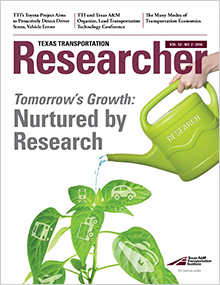Can driver stress levels and abnormal vehicle operations be detected and measured to help prevent crashes? Texas A&M Transportation Institute (TTI) researchers and members of its multidisciplinary, multi-institution team have completed the second year of a three-year project looking at that question. So far, the answer seems to be a resounding “yes.”

The TTI project is funded by the Toyota Economic Loss Settlement — money set aside for transportation safety research. Robert Wunderlich, director of TTI’s Center for Transportation Safety, is the principal investigator and leads a research team from TTI, Texas A&M’s Dwight Look College of Engineering, the University of Houston, the University of Michigan Transportation Research Institute and Texas Tech University.
To detect and measure stress levels, researchers examined 59 volunteer drivers who wore a heart-rate monitor and skin conductance device and were videotaped using a thermal-imaging camera. The volunteers drove the same driver simulation course in four different scenarios — under normal conditions, while distracted with cognitively challenging questions, while distracted with emotionally charged questions, and while preoccupied with texting.
“It’s well known that high levels of stress can contribute to driver error by lowering reaction time, so alerting a stressed driver to that condition has the potential for improving safety,” says Mike Manser, manager of TTI’s Human Factors Program. “Thanks to a multidisciplinary team of dedicated researchers, we’ve made real progress in the first key step of this project. We’re all very pleased with what we’ve been able to accomplish.”
In addition to detecting and measuring driver stress levels, the team is developing sensors able to detect vehicle errors — another potential crash factor. Researchers will then develop and test potential countermeasures, which would let the driver know that either stress levels are high or something is wrong with the vehicle.
Part of the work centers around the development of a series of algorithms to determine the onset of unintended acceleration during driving. But the models could have other applications, such as detecting aggressive driving.
“We are pleased to work with TTI researchers on a meaningful and potentially high-impact project,” says Reza Langari, head of Texas A&M’s Engineering Technology and Industrial Distribution Department. “The work brings together expertise in vehicle dynamics, human factors, machine learning and decision analysis to address an important problem in transportation safety — detection of abnormal driving conditions.”
The ultimate goal of the project is the development of a countermeasure that alerts the driver of abnormal conditions — either with the vehicle or the driver.
“We envision a time in the near future when these systems can be installed in a vehicle,” Manser says.

